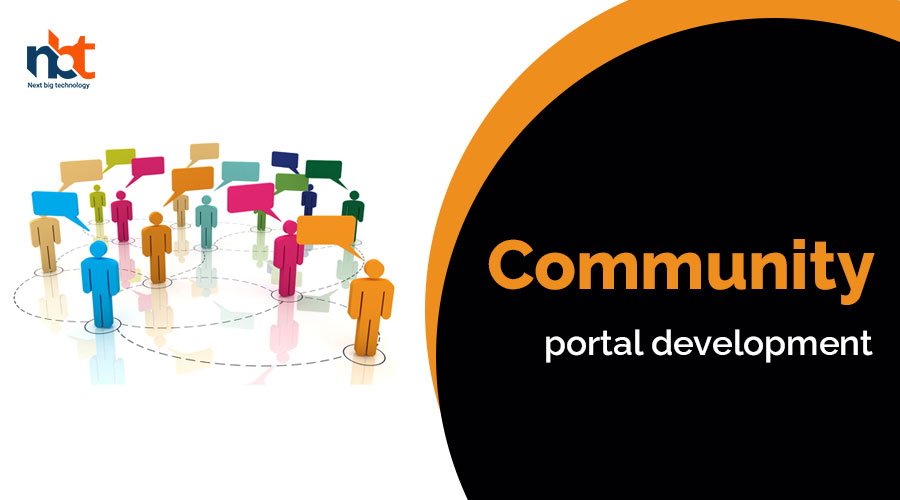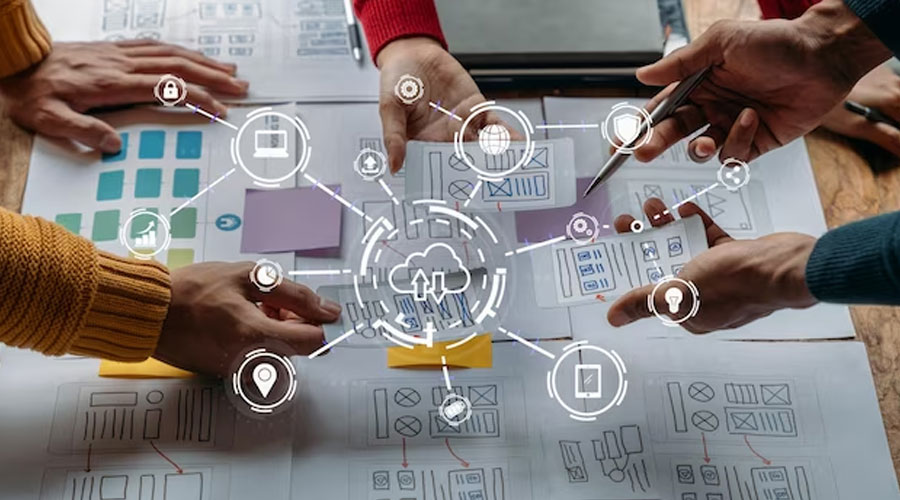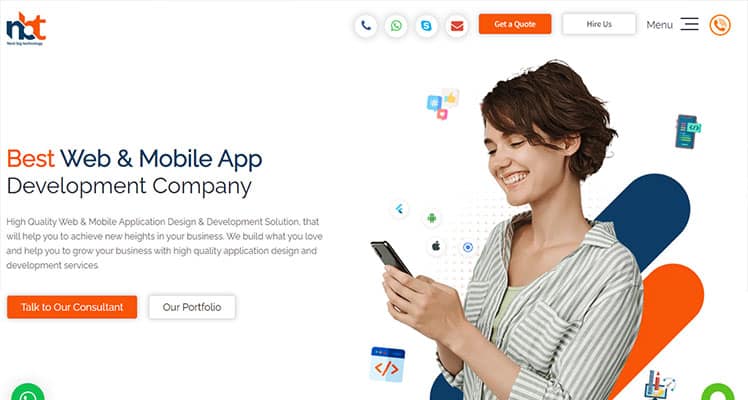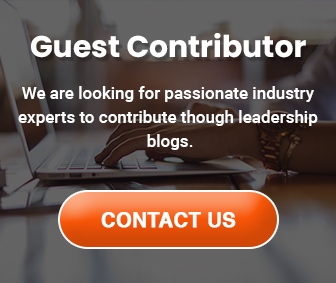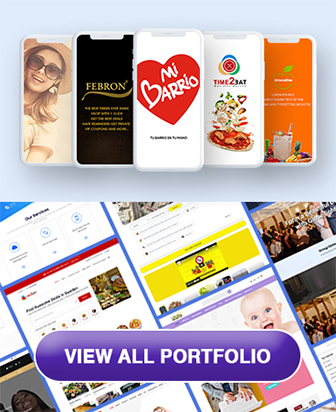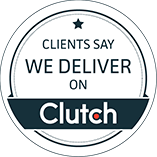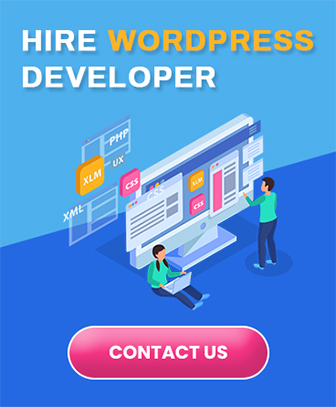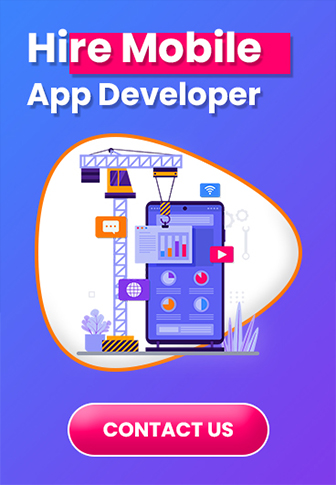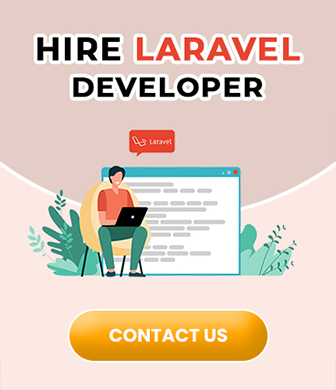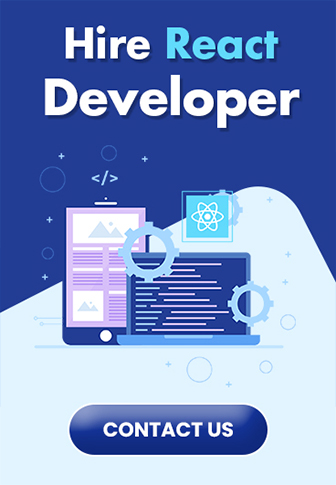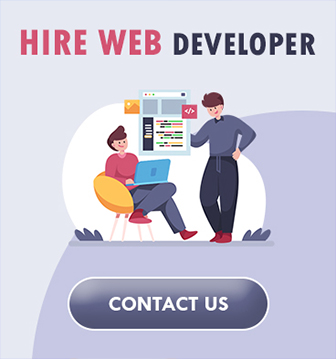Essential Features of a Community portal development
In today’s digital age, community portals have become indispensable tools for fostering engagement, collaboration, and communication among like-minded individuals. Whether it’s a platform for professionals in a specific industry, hobbyists sharing their passions, or residents of a particular locality coming together, a well-designed community portal serves as a virtual hub for interaction. To ensure the success of such portals, several essential features need careful consideration during the development phase.
- User-friendly Interface: The cornerstone of any successful community portal is its user interface. It should be intuitive, easy to navigate, and visually appealing. Users should feel comfortable and encouraged to explore different sections, post content, and interact with others without encountering unnecessary complexities.
- User Profiles and Authentication: Implementing robust user authentication mechanisms ensures the security and integrity of the community. Each user should have a unique profile that they can customize with relevant information such as bio, interests, and contact details. Additionally, authentication methods like email verification or social media integration can enhance user trust and security.
- Discussion Forums and Groups: Facilitating discussions is a fundamental aspect of community portals. Incorporating features like discussion forums and groups allows users to create and participate in conversations around specific topics of interest. These spaces promote knowledge sharing, problem-solving, and networking among members.
- Content Sharing and Collaboration Tools: Enabling users to share various types of content, including articles, images, videos, and documents, fosters engagement and creativity within the community. Integration with collaboration tools such as file sharing, document editing, and project management enhances the portal’s utility for collaborative endeavors.
- Event Management: Community events play a vital role in fostering connections and strengthening bonds among members. An effective community portal should include features for organizing, promoting, and managing events such as meetups, webinars, workshops, and social gatherings. Event calendars, RSVP functionality, and event notifications can streamline the process for both organizers and attendees.
- Messaging and Notifications: Real-time communication is essential for keeping community members informed and engaged. Incorporating messaging systems and notifications allows users to communicate privately, receive updates on relevant discussions, event invitations, and important announcements, thereby enhancing overall user experience and participation.
- Moderation and Community Management Tools: Maintaining a healthy and productive community requires effective moderation and management. Administrators should have access to tools for monitoring user activity, enforcing community guidelines, handling disputes, and managing user roles and permissions. Implementing automated moderation features and user reporting mechanisms can help ensure a safe and respectful environment for all members.
- Analytics and Insights: Tracking and analyzing user behavior, engagement metrics, and content performance provide valuable insights for optimizing the portal’s functionality and content strategy. Integration with analytics tools enables administrators to identify trends, measure the effectiveness of community initiatives, and make data-driven decisions to enhance user satisfaction and community growth.
Advanced Features of a Community portal development
In the fast-paced digital age, the significance of community portals has soared exponentially. These online platforms serve as virtual hubs where individuals with shared interests, goals, or affiliations come together to collaborate, exchange ideas, and build relationships. As the demand for more sophisticated community portals grows, developers are continually innovating to integrate advanced features that elevate user experience and foster deeper engagement. Let’s delve into some of the cutting-edge features shaping the landscape of community portal development.
- Customizable User Profiles: Personalization is key to cultivating a sense of belonging within a community. Advanced community portals offer users the ability to create customizable profiles, allowing them to showcase their interests, expertise, and personality. From profile pictures and bios to customizable themes, these features empower users to curate their online identity and connect with like-minded individuals more effectively.
- Integrated Messaging Systems: Seamless communication is essential for fostering collaboration and interaction within a community. Advanced community portals incorporate integrated messaging systems that enable real-time communication between users. Whether it’s private messaging, group chats, or discussion threads, these features facilitate meaningful conversations and networking opportunities, ultimately strengthening the community bonds.
- Multi-level Content Moderation: Maintaining a safe and conducive environment is paramount in any online community. Advanced community portals leverage multi-level content moderation tools to ensure that user-generated content aligns with community guidelines and standards. From automated content filtering and flagging mechanisms to manual moderation controls, these features help mitigate spam, harassment, and inappropriate content, fostering a positive and inclusive community atmosphere.
- Gamification Elements: Gamification has emerged as a powerful tool for driving user engagement and participation. Advanced community portals integrate gamification elements such as badges, points, levels, and leaderboards to incentivize user activity and reward contributions. By transforming mundane interactions into enjoyable and rewarding experiences, these features motivate users to actively participate and contribute to the community ecosystem.
- Advanced Analytics and Insights: Data-driven insights are instrumental in understanding user behavior, identifying trends, and optimizing community engagement strategies. Advanced community portals leverage sophisticated analytics tools to track key metrics such as user engagement, content performance, and community growth. By analyzing this data, community administrators can gain valuable insights into user preferences and behaviors, enabling them to make informed decisions and tailor the platform to better serve their community members.
- Integrations with Third-party Services: Flexibility and interoperability are essential components of modern community portals. Advanced platforms offer seamless integrations with third-party services such as social media platforms, productivity tools, and content management systems. Whether it’s integrating with popular social networks for user authentication or embedding multimedia content from external sources, these features enhance the functionality and versatility of the community portal, enriching the user experience.
- Mobile Responsiveness and Native Apps: In an increasingly mobile-centric world, accessibility across devices is non-negotiable. Advanced community portals prioritize mobile responsiveness, ensuring that the platform is optimized for seamless access and navigation on smartphones and tablets. Furthermore, native mobile apps provide users with a dedicated and immersive experience, offering features such as push notifications, offline access, and enhanced performance, thereby enhancing user engagement and retention.
Community portal development Timelines
In the digital age, community portals have emerged as vital platforms for fostering engagement, communication, and collaboration among members of a community, whether it’s a local neighborhood, a professional network, or an online interest group. Developing a community portal requires careful planning, execution, and adherence to timelines to ensure its success. Let’s delve into the key stages and timelines involved in the development of a community portal.
- Initial Planning (1-2 Weeks): The journey begins with comprehensive planning. Identify the purpose of the community portal, target audience, features required, and the desired outcomes. Engage stakeholders, gather requirements, and outline a project plan detailing milestones and timelines.
- Design Phase (2-3 Weeks): Designing the user interface (UI) and user experience (UX) is crucial for the success of the community portal. Work with designers to create wireframes, mockups, and prototypes. Ensure that the design aligns with the brand identity and facilitates seamless navigation for users.
- Development (4-6 Weeks): Once the design is approved, developers begin coding the community portal. This phase involves building the backend infrastructure, integrating features such as user registration, authentication, forums, messaging, content management, and any other custom functionalities. Regular testing is conducted to identify and rectify bugs or glitches.
- Content Creation (2-3 Weeks): Concurrently, content creation takes place. Populate the portal with relevant information, resources, announcements, and discussion topics to attract and engage users. Ensure that the content is informative, engaging, and aligns with the interests of the community members.
- Testing and Quality Assurance (1-2 Weeks): Rigorous testing is conducted to ensure that the community portal functions smoothly across different devices, browsers, and operating systems. Test for usability, performance, security, and compatibility issues. Address any identified issues promptly to deliver a seamless user experience.
- Deployment (1 Week): With thorough testing completed and all issues resolved, the community portal is ready for deployment. Deploy the portal on the chosen hosting platform or server environment. Configure domain settings, SSL certificates, and security measures to safeguard user data.
- Training and Documentation (1 Week): Provide training sessions for administrators, moderators, and users to familiarize them with the features and functionalities of the community portal. Create comprehensive documentation, tutorials, and FAQs to support users and address common queries or issues.
- Launch and Promotion (Ongoing): The launch of the community portal marks the beginning of its active use. Promote the portal through various channels such as social media, email newsletters, community events, and word-of-mouth. Encourage participation, gather feedback, and iterate based on user insights to continuously improve the portal.
- Maintenance and Updates (Ongoing): Post-launch, ongoing maintenance is essential to keep the community portal running smoothly. Regularly monitor performance metrics, address any technical issues or security vulnerabilities, and roll out updates or enhancements based on user feedback and evolving community needs.
How Much Does It Cost to Build a Community portal development?
In today’s digital age, community portals have become essential platforms for fostering engagement, collaboration, and communication among various groups of people. Whether it’s a neighborhood association, a professional network, or an online forum, these portals serve as centralized hubs where members can connect, share information, and participate in discussions. However, one common question that arises when considering the development of a community portal is: How much will it cost?
The cost of building a community portal can vary significantly depending on various factors such as features, functionality, scalability, and customization requirements. To provide a clearer understanding, let’s break down the key components that contribute to the overall cost:
- Scope and Complexity: The complexity of your community portal project will have a direct impact on the cost. Basic community portals with standard features such as user registration, discussion forums, and content sharing will be less expensive compared to more complex portals that require advanced functionality like event management, e-commerce integration, or custom user roles.
- Design and User Experience (UX): An intuitive and visually appealing design is crucial for attracting and retaining users. Investing in professional UX/UI design services will enhance the usability of your portal and contribute to a positive user experience. The cost of design will depend on factors such as the number of design iterations, responsiveness across devices, and graphic elements required.
- Development Platform: Choosing the right development platform can also impact costs. Whether you opt for custom development from scratch, utilize open-source platforms like WordPress or Drupal, or leverage community portal solutions such as Ning or BuddyPress, each option comes with its own set of costs and considerations.
- Integration and Customization: If you require integration with third-party systems or custom features tailored to your specific needs, additional development work will be necessary, which can increase the overall cost. Common integrations include social media platforms, payment gateways, CRM systems, and analytics tools.
- Scalability and Maintenance: Building a community portal is not just a one-time investment; ongoing maintenance, updates, and scalability considerations are essential for long-term success. Factor in the costs associated with hosting, security updates, feature enhancements, and technical support to ensure the continued smooth operation of your portal.
- Content Management and Moderation: Implementing robust content management and moderation tools is essential for managing user-generated content and ensuring a safe and respectful community environment. The complexity of these tools and the level of moderation required will influence development costs.
- Testing and Quality Assurance: Thorough testing and quality assurance are crucial to identify and address any bugs or usability issues before launching your community portal. Budgeting for testing processes, including functional testing, usability testing, and security testing, is essential to deliver a reliable and high-quality platform.
How to Create a Community portal development – Team and Tech Stack
In the digital age, community portals serve as vital hubs for bringing people together, fostering engagement, and facilitating collaboration. Whether you’re aiming to create an online forum, a social network, or a niche community platform, the success of your project hinges on two key factors: assembling the right team and selecting the appropriate tech stack. In this guide, we’ll explore the crucial steps involved in creating a thriving community portal.
Assembling Your Team:
- Project Manager: Start by appointing a skilled project manager who can oversee the entire development process, ensuring that deadlines are met, resources are allocated efficiently, and communication flows smoothly between team members.
- Developers: Depending on the scale and complexity of your community portal, you may need frontend developers (HTML/CSS, JavaScript), backend developers (Python, Ruby, Node.js), and database administrators (MySQL, PostgreSQL) to bring your vision to life.
- UI/UX Designers: Invest in talented designers who can craft intuitive user interfaces and engaging user experiences. A well-designed portal will not only attract users but also keep them coming back for more.
- Content Creators: Engaging content is the lifeblood of any community portal. Hire writers, graphic designers, and multimedia specialists to produce high-quality content that resonates with your target audience.
- Community Managers: Building a thriving online community requires dedicated community managers who can moderate discussions, resolve disputes, and foster a sense of belonging among members.
- Quality Assurance (QA) Team: Ensure the quality and functionality of your portal by having a dedicated QA team that rigorously tests every aspect of the platform before it goes live.
Selecting Your Tech Stack:
- Content Management System (CMS): Choose a CMS that aligns with the goals and requirements of your community portal. Popular options include WordPress, Drupal, and Joomla, which offer robust features and flexibility for customization.
- Backend Framework: Select a backend framework that suits your development team’s expertise and the scalability needs of your project. Frameworks like Django (Python), Ruby on Rails (Ruby), and Express.js (Node.js) are commonly used for building dynamic web applications.
- Database Management: Opt for a reliable database management system (DBMS) to store and manage your portal’s data efficiently. MySQL, PostgreSQL, and MongoDB are widely used for their performance, scalability, and versatility.
- Hosting Platform: Choose a reputable hosting provider that offers reliable uptime, scalable infrastructure, and adequate security measures to ensure the smooth operation of your community portal.
- Frontend Technologies: Utilize frontend technologies such as HTML, CSS, and JavaScript frameworks (React, Angular, Vue.js) to create responsive, interactive user interfaces that enhance the user experience.
- Integration and APIs: Integrate third-party services and APIs (Application Programming Interfaces) to extend the functionality of your community portal, such as social media integration, payment gateways, and analytics tools.
Community portal development Process
In today’s digital age, community portals have become indispensable tools for fostering engagement, collaboration, and communication within various groups, whether they be educational institutions, businesses, or local communities. Developing a community portal is not just about creating a website; it’s a strategic process aimed at bringing people together, sharing resources, and facilitating meaningful interactions. Let’s delve into the step-by-step process of creating a successful community portal.
- Define Objectives and Audience: The first crucial step in community portal development is to clearly define the objectives of the portal and identify the target audience. Whether it’s enhancing communication among members, sharing resources, or providing a platform for collaboration, understanding the goals will shape the entire development process.
- Research and Planning: Conduct thorough research to understand the needs and preferences of the target audience. This involves analyzing similar portals, gathering feedback from potential users, and identifying key features and functionalities required. Planning includes defining the site structure, content strategy, and user flow to ensure a seamless user experience.
- Selecting the Right Technology: Choose the appropriate technology stack based on the requirements and scalability of the portal. Whether it’s building from scratch using programming languages like JavaScript or utilizing content management systems (CMS) like WordPress or Drupal, selecting the right technology is crucial for the success of the portal.
- Design and User Experience: Design plays a vital role in engaging users and making the portal intuitive to navigate. Collaborate with designers to create a visually appealing interface that reflects the branding and values of the community. Focus on user experience (UX) design to ensure easy accessibility, clear navigation, and responsive layouts across devices.
- Development and Testing: Once the design is finalized, developers can begin the development phase. This involves coding the front-end and back-end functionalities, integrating features such as user authentication, content management, forums, event calendars, and more. Rigorous testing is essential to identify and fix any bugs or usability issues before the portal goes live.
- Content Creation and Management: Populate the portal with relevant and engaging content tailored to the interests of the community. This includes informative articles, event listings, discussion forums, multimedia content, and user-generated contributions. Implement content management systems to facilitate easy content updates and moderation.
- Launch and Promotion: After thorough testing and refinement, it’s time to launch the community portal. Promote the launch through various channels such as social media, email newsletters, and partnerships to attract users and encourage participation. Provide incentives or rewards to early adopters to drive initial engagement.
- Community Engagement and Feedback: The work doesn’t end after the portal is launched; it’s just the beginning. Actively engage with the community, solicit feedback, and monitor user activity to continuously improve the portal. Regularly update content, introduce new features, and address user concerns to keep the community thriving.
- Analytics and Optimization: Utilize analytics tools to track user behavior, measure engagement metrics, and gain insights into the effectiveness of the portal. Analyze data to identify areas for improvement and optimize the portal accordingly. This iterative process ensures that the community portal evolves to meet the changing needs of its users.
- Maintenance and Support: Maintain regular updates, security patches, and backups to ensure the smooth functioning of the portal. Provide ongoing support to address user inquiries, technical issues, and feature requests promptly. Building a reliable support system fosters trust and loyalty within the community.
Next Big Technology – Your Trusted Community portal development Partner
In today’s digital age, the power of online communities cannot be overstated. Whether it’s connecting people with shared interests, facilitating collaboration among professionals, or providing a platform for knowledge sharing, community portals play a vital role in fostering engagement and connectivity. As businesses and organizations increasingly recognize the importance of nurturing these online communities, the demand for reliable portal development partners continues to grow. In this regard, Next Big Technology emerges as a trusted ally, offering innovative solutions tailored to meet the evolving needs of modern online communities.
At Next Big Technology, we understand that building a successful community portal requires more than just technical expertise. It demands a deep understanding of user behavior, seamless integration of features, and a commitment to delivering exceptional user experiences. With years of experience in the field, our team of seasoned developers, designers, and strategists possesses the skills and insights needed to bring your vision to life.
One of the key strengths of Next Big Technology lies in our ability to leverage cutting-edge technologies to create robust and scalable community portals. Whether you’re looking to build a social networking platform, a knowledge sharing hub, or an online marketplace, we have the expertise to deliver tailor-made solutions that align with your objectives. From intuitive user interfaces to advanced functionality, we prioritize usability and performance at every stage of the development process.
Moreover, our approach to portal development is highly collaborative. We believe in working closely with our clients to understand their unique requirements, goals, and challenges. By fostering open communication and transparency, we ensure that the final product not only meets but exceeds expectations. Whether you’re a startup looking to establish your presence online or a large enterprise aiming to enhance customer engagement, you can trust Next Big Technology to be your dedicated partner every step of the way.
In addition to our technical prowess, we also place great emphasis on quality assurance and ongoing support. Our team conducts rigorous testing to identify and address any potential issues, ensuring that your community portal functions flawlessly across all devices and platforms. Furthermore, we offer comprehensive maintenance and support services to keep your portal running smoothly and efficiently long after its launch.
Enterprise Community portal development
In today’s interconnected digital landscape, enterprises are constantly seeking innovative ways to foster collaboration, engagement, and knowledge-sharing among their employees, partners, and customers. One such solution gaining prominence is the development of enterprise community portals. These portals serve as centralized platforms where individuals within and outside the organization can interact, collaborate, and access resources pertinent to their roles and interests. In this article, we delve into the significance of enterprise community portal development, its key components, and how it can drive organizational success.
Understanding Enterprise Community Portal Development
Enterprise community portal development involves creating a digital environment tailored to the specific needs and objectives of an organization. Unlike traditional intranets or communication tools, these portals are designed to facilitate dynamic interactions and empower users to contribute meaningfully to discussions, projects, and initiatives.
Key Components of an Enterprise Community Portal
- User Authentication and Authorization: Security is paramount in enterprise environments. Robust authentication mechanisms ensure that only authorized users can access the portal, safeguarding sensitive information and maintaining data integrity.
- Intuitive User Interface (UI) and User Experience (UX): A user-friendly interface is essential for driving adoption and engagement. Intuitive navigation, personalized dashboards, and responsive design enhance usability and encourage active participation.
- Collaboration Tools: From discussion forums and instant messaging to document sharing and project management integrations, collaboration tools enable seamless communication and teamwork across departments, geographies, and organizational hierarchies.
- Content Management System (CMS): A flexible CMS empowers administrators to create, publish, and manage diverse content types, including articles, announcements, events, and multimedia assets. Version control and workflow management streamline content creation processes and ensure quality and consistency.
- Analytics and Reporting: Data-driven insights provide valuable feedback on user engagement, content performance, and community dynamics. Analytics dashboards and reporting tools enable administrators to measure the effectiveness of their initiatives and make informed decisions to optimize portal functionality and content strategy.
- Customization and Extensibility: Every organization has unique requirements and preferences. Customization options allow administrators to tailor the portal’s look, feel, and functionality to align with their brand identity and business objectives. Additionally, support for third-party integrations and extensions enhances scalability and enables the seamless integration of existing systems and tools.
Driving Organizational Success through Enterprise Community Portals
- Knowledge Sharing and Collaboration: By breaking down silos and facilitating cross-functional collaboration, enterprise community portals foster knowledge sharing, innovation, and problem-solving. Employees can leverage collective expertise, best practices, and institutional knowledge to drive business growth and competitive advantage.
- Employee Engagement and Retention: Engaged employees are more productive, motivated, and committed to their organizations. Enterprise community portals provide a platform for recognition, feedback, and social interaction, fostering a sense of belonging and reinforcing organizational culture and values.
- Customer and Partner Engagement: Beyond internal stakeholders, enterprise community portals can also serve as hubs for engaging with customers, partners, and other external stakeholders. From product feedback and support forums to training resources and co-creation initiatives, these portals deepen relationships, enhance brand loyalty, and drive customer satisfaction and retention.
- Innovation and Ideation: Empowering employees to share ideas, propose solutions, and provide feedback fosters a culture of innovation and continuous improvement. Enterprise community portals serve as incubators for new concepts, initiatives, and partnerships, driving organizational agility and resilience in an ever-evolving marketplace.
Top Community portal development Companies
In today’s digital era, community portals play a pivotal role in fostering connections, collaboration, and engagement among diverse groups of people. Whether it’s for educational institutions, businesses, or interest-based communities, having a well-designed and functional community portal is essential. However, with numerous companies offering portal development services, it can be overwhelming to choose the right one. To simplify your search, let’s delve into some of the top community portal development companies known for their expertise and innovation in this field.
-
-
Next Big Technology:
Next Big Technology is one of the top development companies for the high-quality development of mobile apps and web development services. They have having experienced in-house team of developers who provide top-notch development services according to the business requirements. NBT provides highly business-oriented services and implements all the latest and trending tools and technologies. They always work hard to deliver a top-notch solution at an affordable cost. They are having experience of more than 13 years and delivered lots of projects around the globe to businesses and clients.
NBT is highly focused on providing top-notch development solutions at a very affordable cost. By using their market experience and development experience, they are delivering proper solutions to clients and various industries for their custom requirements.
Location: India, USA, UK, Australia
Hourly Rate :< $25 per Hour
Employees: 50 – 249
Focus Area
- Mobile App Development
- App Designing (UI/UX)
- Software Development
- Web Development
- AR & VR Development
- Big Data & BI
- Cloud Computing Services
- DevOps
- E-commerce Development
Industries Focus
- Art, Entertainment & Music
- Business Services
- Consumer Products
- Designing
- Education
- Financial & Payments
- Gaming
- Government
- Healthcare & Medical
- Hospitality
- Information Technology
- Legal & Compliance
- Manufacturing
- Media
-
- Intellectsoft: Intellectsoft is renowned for its comprehensive approach to portal development, combining cutting-edge technology with strategic insights to deliver exceptional results. Their expertise spans across various industries, and they have a proven track record of delivering robust community portals that drive engagement and foster meaningful connections.
- Iflexion: Iflexion stands out for its commitment to innovation and customer satisfaction. They leverage the latest technologies and best practices to develop feature-rich community portals that empower organizations to build vibrant online communities. Their team works closely with clients to understand their objectives and deliver tailored solutions that exceed expectations.
- Algoworks: Algoworks specializes in creating custom portal solutions that cater to the unique requirements of businesses and communities alike. Their team of experienced developers excels in building intuitive and scalable portals that enhance communication, collaboration, and knowledge sharing among community members. From social networking platforms to online forums, Algoworks has the expertise to bring any community portal idea to life.
- Sphinx Solutions: Sphinx Solutions is known for its expertise in developing highly interactive and engaging community portals that drive user participation and loyalty. They combine creativity with technical prowess to deliver innovative solutions that enable organizations to create thriving online communities. With a focus on user experience and scalability, Sphinx Solutions ensures that every portal they develop meets the highest standards of quality and performance.
FAQs on Community portal development
In today’s digital era, community portals have become indispensable platforms for fostering engagement, collaboration, and knowledge sharing among individuals with shared interests or goals. Whether it’s a niche hobby community, a professional network, or an educational forum, building a robust community portal requires careful planning and execution. To shed light on this topic, let’s delve into some frequently asked questions (FAQs) surrounding community portal development:
- What is a community portal, and why is it essential? A community portal is a centralized online platform where users can connect, interact, and collaborate within a specific community or interest group. It serves as a virtual hub for sharing resources, discussions, events, and fostering relationships. Community portals are essential for building a sense of belonging, facilitating knowledge exchange, and driving collective action among members.
- What are the key features of a successful community portal? A successful community portal typically includes features such as user profiles, discussion forums, messaging capabilities, content sharing, event management, groups or sub-communities, moderation tools, and analytics. These features enable users to engage meaningfully, contribute content, connect with like-minded individuals, and facilitate community growth.
- What technologies are commonly used to develop community portals? The choice of technologies for developing a community portal depends on various factors such as scalability, customization requirements, security, and budget. Commonly used technologies include content management systems (CMS) like WordPress, Drupal, or Joomla, as well as custom web development using programming languages such as PHP, Python, or JavaScript frameworks like React or Angular.
- How can we ensure community portal security and privacy? Security and privacy are paramount concerns for any online community portal. Implementing robust authentication mechanisms, data encryption, regular security audits, and adherence to industry best practices can help mitigate security risks. Additionally, providing users with granular privacy settings and clear data usage policies fosters trust and transparency within the community.
- What strategies can be employed to drive user engagement on a community portal? To enhance user engagement, community managers can employ various strategies such as gamification elements, rewards and recognition programs, targeted content creation, regular communication through newsletters or notifications, hosting live events or webinars, and fostering a welcoming and inclusive community culture.
- How do you measure the success of a community portal? Measuring the success of a community portal involves tracking key performance indicators (KPIs) such as user engagement metrics (e.g., active users, page views, contributions), retention rates, member satisfaction surveys, conversion rates (if applicable), and community impact metrics such as knowledge sharing or collaboration outcomes.
- What are some common challenges faced during community portal development? Common challenges in community portal development include balancing usability with feature complexity, ensuring scalability and performance under increasing user loads, managing content moderation and user-generated content, fostering community growth and addressing user retention issues, and staying abreast of evolving technology trends and user preferences.
- How can community portals adapt to evolving user needs and trends? Community portals must remain agile and responsive to evolving user needs and trends. This involves soliciting feedback from community members, conducting regular usability testing, monitoring industry trends and competitor analysis, embracing new technologies or features, and continuously iterating and improving the platform based on user insights.
Thanks for reading our post “Community portal development”. Please connect with us to learn more about the Community portal.







